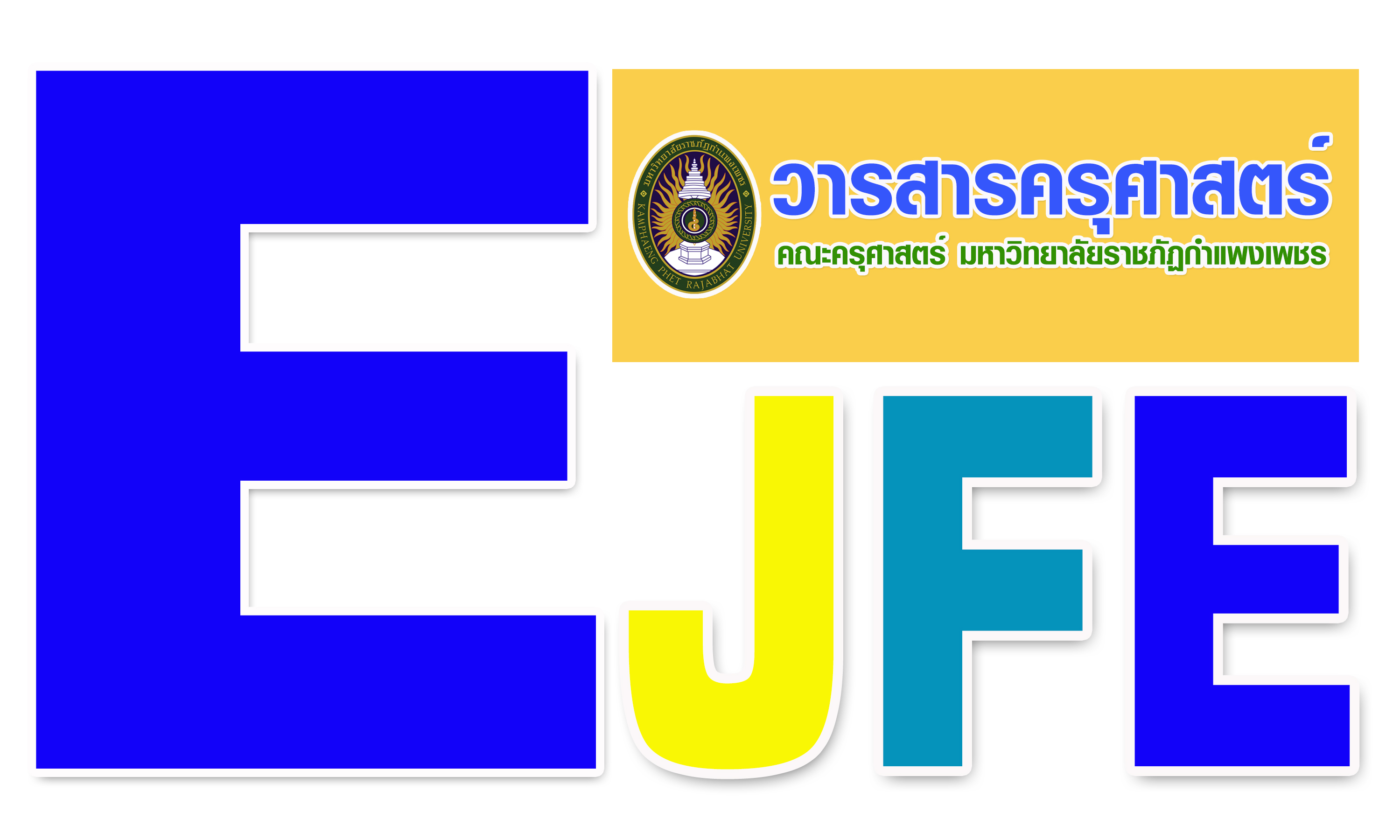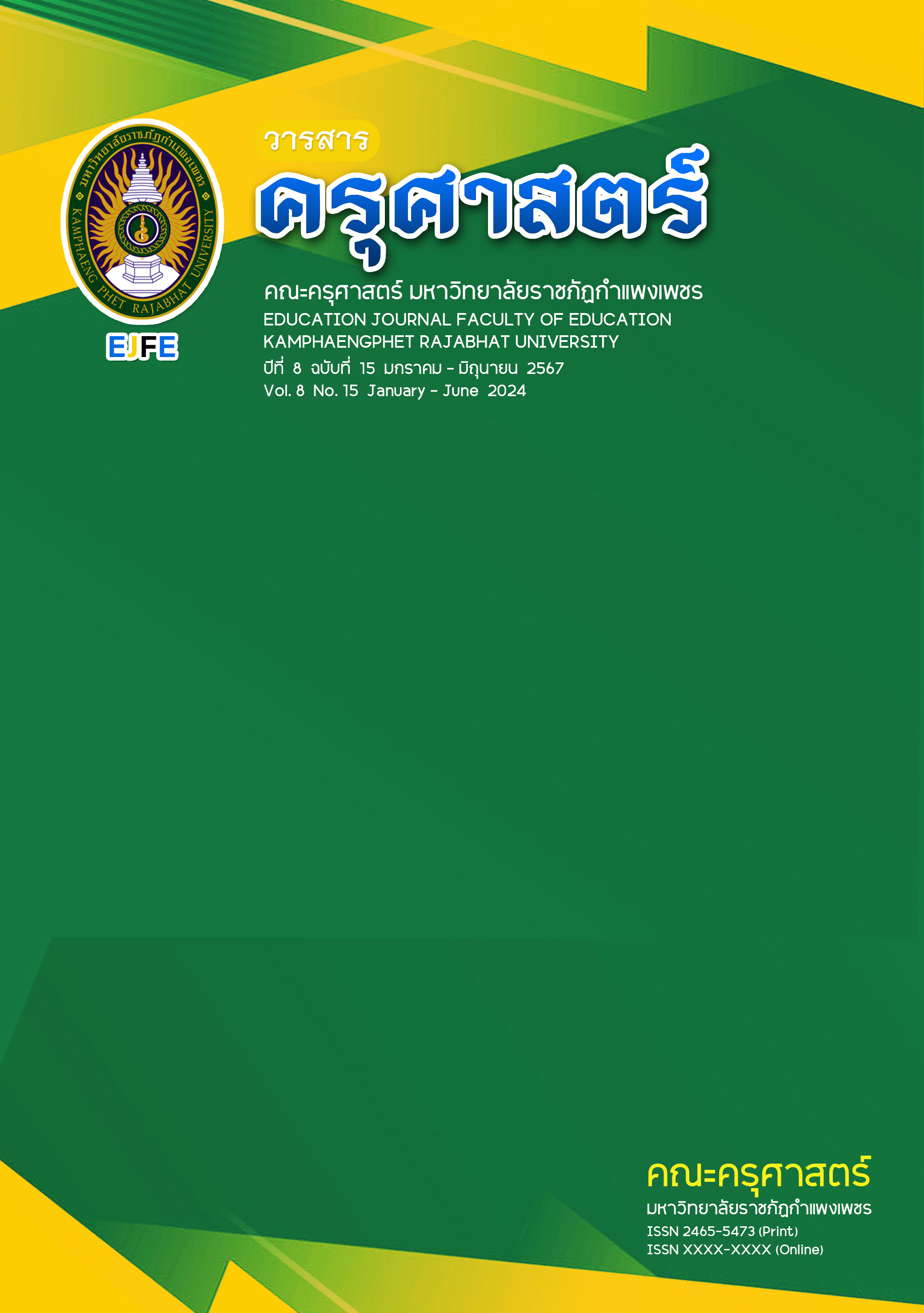การพัฒนาผลสัมฤทธิ์ทางการเรียนโดยวิธีการสอนด้วยชุดกิจกรรมสามก๊ก 6 ขั้นตอน (SAMKOK 6 STEPS) เรื่อง สามก๊ก ตอนกวนอูไปรับราชการกับโจโฉ สำหรับนักเรียน ชั้นมัธยมศึกษาปีที่ 6 โรงเรียนเตรียมอุดมศึกษาพัฒนาการสุวรรณภูมิ กรุงเทพเทพมหานคร
Main Article Content
บทคัดย่อ
การวิจัยครั้งนี้มีวัตถุประสงค์เพื่อ 1. เพื่อพัฒนาชุดกิจกรรมสามก๊ก 6 ขั้นตอน (SAMKOK 6 STEPS) ให้มีประสิทธิภาพตามเกณฑ์ มาตรฐาน 80/80 2. เพื่อศึกษาและพัฒนาผลสัมฤทธิ์ทางการเรียนระหว่างก่อนเรียนกับหลังเรียนของนักเรียนที่เรียน ด้วยชุดกิจกรรมสามก๊ก 6 ขั้นตอน เรื่อง สามก๊ก ตอนกวนอูไปรับราชการกับโจโฉ สําหรับนักเรียนชั้นมัธยมศึกษาปีที่ 6 และ 3. เพื่อศึกษาความคิดเห็นของนักเรียนชั้นมัธยมศึกษาปีที่ 6 ที่มีต่อการเรียนเรื่องสามก๊ก ตอนกวนอู ไปรับราชการกับโจโฉด้วย ชุดกิจกรรมสามก๊ก 6 ขั้นตอน กลุ่มตัวอย่างในการวิจัย เป็นนักเรียนชั้นมัธยมศึกษาปีที่ 6 โรงเรียนเตรียมอุดมศึกษาพัฒนาการสุวรรณภูมิ จำนวน 2 ห้องเรียน ได้แก่ นักเรียนระดับชั้นมัธยมศึกษาปีที่ 6/2 และนักเรียนระดับชั้นมัธยมศึกษาปีที่ 6/4 จำนวน 68 คน โดยวิธีการสุ่มแบบเจาะจง เนื่องจากนักเรียนทั้งสองห้องมีระดับความสามารถในการเรียนรู้ใกล้เคียงกัน เครื่องมือที่ใช้ในการวิจัย คือ เอกสารประกอบการเรียน เรื่อง สามก๊ก ตอนกวนอูไปรับราชการกับโจโฉ แผนการจัดการเรียนรู้ เรื่อง สามก๊ก ตอนกวนอูไปรับราชการกับโจโฉ ด้วยวิธีการสอนด้วยชุดกิจกรรมสามก๊ก 6 ขั้นตอน แบบทดสอบวัดผลสัมฤทธิ์ทางการเรียน เรื่อง สามก๊ก ตอน กวนอูไปรับราชการกับโจโฉ แบบทดสอบความคิดเห็นของนักเรียนที่มีต่อการเรียนด้วยวิธีการสอนด้วยชุดกิจกรรมสามก๊ก 6 ขั้นตอน วิเคราะห์ข้อมูลโดยใช้ค่าสถิติ ค่าเฉลี่ย (X) ค่าเบี่ยงเบนมาตรฐาน (S.D.) และทดสอบค่าเฉลี่ยโดยใช้การทดสอบที
ผลการวิจัยพบว่า 1. ชุดกิจกรรมสามก๊ก 6 ขั้นตอน (SAMKOK 6 STEPS) โดยการใช้ตัวแทน (Representations) ชั้นมัธยมศึกษาปีที่ 6 ที่พัฒนาขึ้นมีประสิทธิภาพ 86.10/83.00 2. ผลสัมฤทธิ์ทางการเรียนระหว่างก่อนเรียนและหลังเรียนของนักเรียนที่เรียนด้วยชุดกิจกรรมสามก๊ก 6 ขั้นตอน (SAMKOK 6 STEPS) แตกต่างอย่างมีนัยสำคัญทางสถิติที่ระดับ 0.05 โดยผลสัมฤทธิ์ทางการเรียนหลังเรียนสูงกว่าผลสัมฤทธิ์ทางการเรียนก่อนเรียน 3. ความพึงพอใจของนักเรียนชั้นมัธยมศึกษาปีที่ 6 ที่มีต่อการเรียนเรื่อง สามก๊ก ตอนกวนอูไปรับราชการกับโจโฉโดยวิธีการสอนด้วยชุดกิจกรรมสามก๊ก 6 ขั้นตอน (SAMKOK 6 STEPS) อยู่ในระดับมาก
Article Details

อนุญาตภายใต้เงื่อนไข Creative Commons Attribution-NonCommercial-NoDerivatives 4.0 International License.
CC Attribution-NonCommercial-NoDerivatives 4.0
เอกสารอ้างอิง
กระทรวงศึกษาธิการ. (2551). หลักสูตรแกนกลางการศึกษาขั้นพื้นฐาน พุทธศักราช 2551. กรุงเทพฯ: โรงพิมพ์รับส่งสินคา้และพสัดภุัณฑ์ (ร.ส.พ.).
คำสิงห์ ศรีนอก. (2560). ภาษาไทยในฐานะภาษาที่สอง. กรุงเทพฯ: สำนักพิมพ์แห่งจุฬาลงกรณ์มหาวิทยาลัย.
ประยูร ผ่องประเสริฐ. (2559). วัฒนธรรมและภาษาของชาติไทย. กรุงเทพฯ: สำนักพิมพ์มหาวิทยาลัยธรรมศาสตร์.
พระอุดมธีรคุณ. (2563). ภาษาและวัฒนธรรม: ความหมาย ความสำคัญ และความสัมพันธ์ระหว่างกัน. วารสารมหาจุฬาวิชาการ, 7(2), 53-63.
เยาวนารถ พันธุ์เพ็ง. (2563). การสื่อสารอัตลักษณ์เด็กผ่าน Youtube. วารสารวิชาการศรีปทุม ชลบุรี, 16(3), 23-29.
วิเชียร ธำรงโสตถิสกุล. (2560). บทสะท้อนแนวคิดว่าด้วยชุดการสอน ชุดกิจกรรมการเรียนรู้ และชุดการเรียนรู้. วารสารศึกษาศาสตร์ มหาวิทยาลัยนเรศวร, 19(3), 356-369.
วรรณดี สุวรรณวงศ์. (2558). ภาษาศาสตร์ทั่วไป. เชียงใหม่: มหาวิทยาลัยเชียงใหม่.
สุชาติ สวัสดิ์ศรี. (2560). ภาษาศาสตร์และวัฒนธรรมไทย. เชียงใหม่: มหาวิทยาลัยเชียงใหม่.
สุนันทา สุวงศ์กำแหง. (2560). การพัฒนาชุดกิจกรรมการเรียนรู้แบบสืบเสาะหาความรู้ร่วมกับการจัดการเรียนรู้โดยใช้สมองเป็นฐาน เรื่อง วัฏจักรเคมี สำหรับนักเรียนชั้นมัธยมศึกษาปีที่ 5. วิทยานิพนธ์ครุศาสตรมหาบัณฑิต สาขาวิชาหลักสูตรและการสอน มหาวิทยาลัยราชภัฏพระนครศรีอยุธยา.
เสถียร จันทิมาธร. (2561). วรรณคดีสามก๊ก. กรุงเทพฯ: สำนักพิมพ์มหาวิทยาลัยธรรมศาสตร์.


